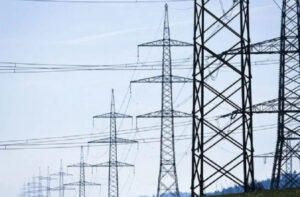Menu
German Industrial Output Declines Slightly in March, Signaling Steady Economic Resilience
- Junnel G
- May 9, 2024
- 9:16 pm
- No Comments

In March 2024, German industrial production experienced a minor decline, dropping by 0.4 percent month-on-month. This decrease, reported by the federal statistics agency Destatis, was less severe than many analysts had anticipated, with pre-release forecasts predicting a steeper fall of 1 percent. Despite this downturn, the resilience of Europe’s largest economy continues to manifest, suggesting a gradual recuperation from the challenges it has faced.
A Closer Look at the Numbers
The recent data from Destatis follows a period of strong industrial performance in January and February, indicating that the March figures might represent a minor hiccup rather than a prolonged downturn. The specifics of the decline reveal a mixed landscape within the industrial sectors: while mechanical engineering and pharmaceuticals saw reduced activity, there was a noticeable uptick in the automobile, electrical equipment, and metal products sectors.
Moreover, the construction sector, which had previously suffered a sharp downturn, showed signs of recovery with a 1 percent increase compared to the previous month. This suggests a potential stabilization in one of the more volatile segments of the economy.
Economic Context and Predictions
The German economy has had its share of trials, particularly throughout 2023, which included high inflation and a slowdown in manufacturing, compounded by weaknesses in key trading partners. However, recent months have brought a slew of more positive indicators. The slowing of inflation and optimistic outcomes in various business and activity surveys have bolstered expectations for a continued recovery in industrial production throughout the year.
ING bank economist Carsten Brzeski remarked on the recent data as being “encouraging and more positive,” serving as “balm for the German economic soul.” Yet, he also cautioned that “a bottoming out does not automatically lead to a strong recovery,” highlighting the complex nature of economic revitalization.
Signs of a Broader Recovery
Despite the slight contraction in March, the broader economic indicators remain hopeful. Germany’s GDP showed marginal growth at the start of the year, defying earlier forecasts of a recession. This positive outcome has led to a slight upward revision in the government’s economic forecasts for 2024, now expecting a growth of 0.3 percent, up from the previously predicted 0.2 percent.
This adjustment reflects a cautiously optimistic outlook for the German economy, underpinned by improving industrial production and stabilizing economic conditions. Analysts and officials alike are watching for sustained improvements that might signal a robust recovery from the “perfect storm” of economic challenges faced in the previous year.
Conclusion
The modest decline in German industrial output for March underscores a critical narrative about the nation’s economic trajectory: while challenges remain, the foundations for recovery appear to be solidifying. With various sectors showing improvement and economic forecasts being revised upwards, there is a palpable sense of cautious optimism about Germany’s economic resilience and future prospects.
As the year progresses, the focus will remain on translating these subtle gains into a more pronounced and sustainable economic upturn, ensuring that the largest economy in Europe can navigate past its recent turbulences towards a stable and prosperous future.
#Top Tags COVID Covid-19 Technology Finance Investing Sustainability Economy

Subscribe to Our Newsletter and get a free pdf:



















No comment yet, add your voice below!